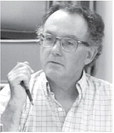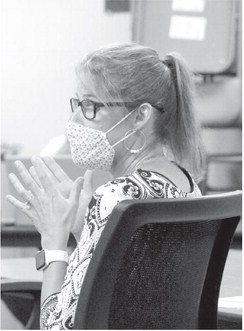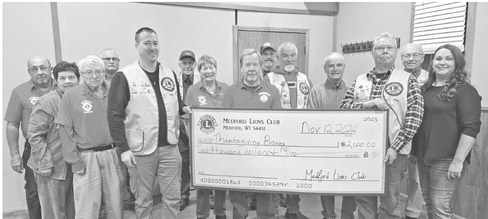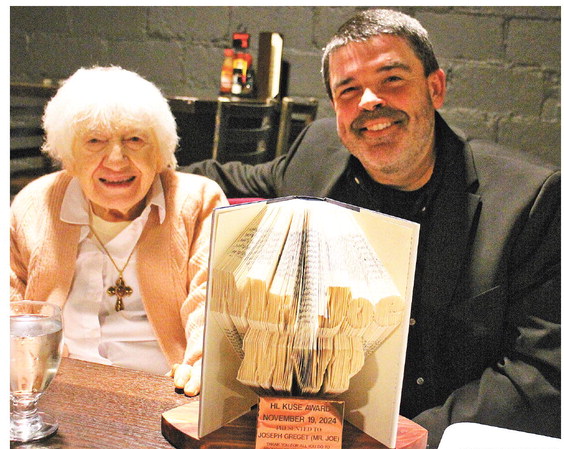The question of the status ….
The question of the status of the fall high school sports season took center stage for a large portion of the discussion as parents in attendance at the meeting called on the district to be less restrictive and instead leave it up to parents to determine the acceptable level of risk.
“We want the board and district to allow the parents to make the decision regarding contacts days and workouts,” said John Kuhn during the public comment portion of the meeting. He said looking back there was little reason to stop the winter season and cancel the spring season when this area didn’t see its first confirmed case until much later.
“This country was founded on freedom of choice,” Kuhn said, adding that Americans have always been willing to take risks citing examples ranging from business to dropping the atomic bombs on Japan. He said it is important to look at the science before making decisions.
“The easy way out is to shut down activities,” Kuhn said, instead he urged board members to “not just pander to school administrators.”
Kuhn’s comments were echoed by parents Beth Baker and Angie Hupf who cited feedback from sports, the majority of whom called for a return to more normal athletics. Baker shared with board members a review of COVID-19 cases in the Great Northern Conference that shows a minimal level of COVID-19 risk. She said they wanted the board to have facts. “Our motto is to live off of facts instead of fear, because as a country we are living off of fear,” Baker said.
Hupf noted that of the families of athletes they surveyed the vast majority were already participating in organized athletic activities with more than 10 people. She said it would be better to have the kids in the school sports programs. “They will choose bad decisions if we don’t have good things for them to do,” Hupf said of the youth.
The sports comments from parents were in part spurred by the recent decision of the WIAA Board of Control to delay the start of the fall season and from the decision by district administrator Pat Sullivan to follow WIAA guidelines and limit activities in the school buildings when the county moved from moderate to high risk for COVID-19. This was based on the high percentage of increase in the number of confirmed cases in the county.
“When you are working with small numbers the percentages are huge,” said board member DeDe Strama.
“We can’t just act arbitrarily,” athletic director Andy Guden said, noting that while people may not like the decision of the WIAA, the district is required to follow them. It was noted that the bigger issue with sporting events is likely to be who will be allowed to be in attendance.
Guden also put into perspective what was actually eliminated saying that things were moved off-site and modifications were made to allow camps to be held as long as groups stayed in their pods.
“We didn’t cancel anything, it just looked different,” Guden said.
In response to questions on if the coaches could hold additional camps, Guden said the WIAA strictly limits the number of contact days between football coaches and players in the off season.
There was a lengthy discussion among board members on the difference between rules and guidelines and recommendations. Sullivan said he made the call to follow the guidelines set by the WIAA for summer contact and activities. He asked for direction from the board on if he should continue to follow those guidelines or if he should base his decisions on something else. “Does this board want to give a direction to not follow the WIAA guidelines?” Sullivan asked.
“I am in favor of allowing as much as normal, as possible,” said board president Dave Fleegel adding that he felt the district shouldn’t necessarily follow WIAA guidelines. In the end board members voted to have Sullivan continue to follow the guidelines until the start of the school year. Fleegel and member Cheryl Wibben were opposed.
After the lengthy discussion related to sports, the board then turned to discussion of options on ways to reopen the school this fall.
School administration had been tasked with developing a plan on how school could reopen. Curriculum director Laura Lundy presented the plan emphasizing the goals of safety, instruction and adaptability.
The proposal included the following three different plan options: Plan A - Students return to school building five days a week with additional safety precautions such as required mask for staff and students when social distancing is not possible and a reduction in the school day by about an hour to provide additional time for teacher prep time and teacher contact with those choosing a remote option.
Plan B - School resumes with fewer students in classroom to have half the students attending at a time. This would be done with students either in school on Monday and Tuesday or Thursday and Friday with remote instruction the remainder of the days. The students who are not in the building will do remote learning. Masks would be strongly encouraged when social distancing is not possible.
Plan C — Staff instructs students remotely. Students do not attend in school classes. This was noted to be a last resort option and not where the district would like to be.
As part of all the plans is the option for parents, if they choose, to sign their child up to do remote learning.
Within each of the buildings how they would handle things would be slightly different to match the educational needs of those levels. For example, once elementary students are in their classroom, they could remove their masks because they would be staying within their same group.
Lundy explained that under the plans teachers will be required to develop more robust learning plans and that if they have to go to a remote option it will be different than in the spring with students required to participate with attendance taken and assignments to be completed.
“We have to be flexible and have to be adaptable,” said middle school principal Al Leonard. He said a challenge is that one-third of the kids don’t have reliable internet so they will need pencil and paper packets.
As part of the plans, teachers would be called on to wipe down the desks and other hard surfaces between classes. Wibben asked why this couldn’t be done by students.
Sullivan responded that the regulations on the use of the cleaning chemicals won’t allow it.
Wibben questioned the impact a shorter school day would have on latchkey kids. She said businesses won’t be able to adjust work hours to allow parents to be home. Elementary principal Dan Miller said the after school Community Learning Center (CLC) program would still be operating and accommodate the change.
Baker asked if they considered a later start rather than an earlier release. Miller said they discussed that option, but felt that it would be greater hardship on families to get kids to the school later than having them done earlier in the afternoon. Miller explained it was also signifi cantly harder to get people willing to stay after school for the CLC versus coming in earlier.
Hallgren asked if under the Plan A if the additional hour a day would be adequate for staff to take on the extra work that will be required. Sullivan responded that it is a question, but likely will be tough.
“What is next will they walk in water on Saturday and say mass on Sunday?” Hallgren said of the additional load on teachers.
Fleegel got discussion fired up with a motion to adopt Plan A but not require masks for anybody, stating he feels it is a personal choice. “It is a guideline, not a law,” he said.
This drew criticism from building principals who expressed concern about keeping teachers healthy and the ability to even get substitute teachers.
“Do you want them in a mask or do you want them sitting at home?” Miller asked, noting that they need to have teachers able to feel safe working in the buildings.
Leonard responded that there are three ways to keep kids in schools and mitigate the spread of the COVID-19 — distance, masks and cleaning. He said the district has the ability to control all three and as far as staff objecting to masks, he noted it would be a condition of employment to wear them just like other workplace rules.
Fleegel objected to the cleaning needs such as wiping down desk chairs. “It is not a teacher’s job to clean a desk,” Fleegel said.
Leonard responded that the shortened day was for instruction, not for cleaning.
Fleegel cited a survey done by the school earlier this summer where the majority of respondents said no masks. “Now you are changing the game,” he said.
“The game changes every day,” Sullivan responded.
Board member John Zuleger supported not wearing masks asserting that the transmission from children to adults is “exceedingly low.” He was countered by Hallgren who said by doing this the district would be OK with the risk of someone getting sick or even dying because the district didn’t do all it could to prevent it.
“We can say the same about influenza,” Strama said.
“That is bullshit,” Hallgren responded, saying the district has an obligation to look out for the safety of students and staff.
“Our job is to provide education,” Fleegel said.
Deml noted that he has received phone calls from parents that have said they will not send their kids back if the schools do not require masks.
“Meet us halfway so that we can protect everyone,” said board member Barb Knight. She talked of coming before the school board years ago objecting to shifting city kids to Stetsonville Elementary School and how that she has come to realize that the only time it was an issue with students, is when parents made it an issue for their students. She said the district needs to protect the children and have them understand why wearing a mask is important so that they can have in-person learning every day through the year.
Sullvian noted that President Donald Trump is now wearing a mask and top medical advisors are wearing masks. “They are showing leadership,” Sullivan said.
Fleegel’s motion failed of a 4-4 vote with Oralee Dittrich absent.
An alternate motion to approve adopting Plan A and requiring the masks to be worn also generated discussion. Much of that focused on how it would be enforced. Leonard said it would be treated like any other dress code violation. There was also additional clarification that mandatory masks did not mean the students would be wearing them all day long. When social distancing was able to take place, the mask may not be worn.
Knight noted that at all state colleges masks are required of students on campus. Fleegel countered that people have a choice to go to college.
In the end, board members voted 5-3 to approve the Plan A as presented with Zuleger, Hallgren and Fleegel opposed.

Brian Hallgren

Curriculum director Laura Lundy explains the educational components of the plans to reopen the schools this fall while seeking to maintain safety under the COVID-19 pandemic.BRIAN WILSON/THE STAR NEWS



